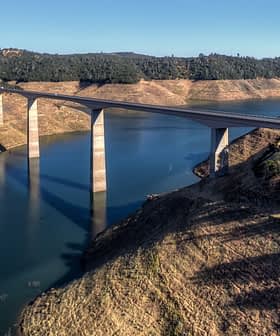This week, California producers voted into existence a new Olive Oil Commission of California with an eye toward enhancing the competitiveness of the state’s olive oil industry.
In 2013, Senator Lois Wolk (D‑Davis) introduced Senate Bill 250 declaring the California olive oil industry a “public interest” and establishing a Commission. The bill was approved by the state Assembly and Senate and signed by the Governor, but still required a referendum vote of producers before the Commission could become operative. In February and March 2014, the California Department of Food and Agriculture (CDFA) conducted a mail-in ballot vote and announced this week that state olive oil producers endorsed the Commission.
According to an American Olive Oil Producers Association (AOOPA), 86 percent of the participating producers voted in favor of the Commission. “With their resounding vote, California growers have made an unequivocal statement” in support of establishing industry standards, said Kimberly Houlding, AOOPA executive director.

Vincent Ricchiuti of the Enzo Olive Oil Company said the vote “shows that California producers overwhelmingly are excited about getting standards for olive oil that help consumers trust that bottles are properly labeled and they can trust what’s inside.”
AOOPA acted as the proponent organization working with the CDFA in the referendum process by helping educate growers about the Commission and its implementation steps, said Houlding. Only the larger growers, those who produced more than 5,000 gallons of olive oil in the 2012 season, were eligible to vote and are also the only ones who would be required to adhere to Commission rules. Of the 74 vote-eligible producers, 50 (or 68 percent) submitted valid ballots, said Joe Monson of the CDFA.
In California, the commission form of government gives those involved in an industry the opportunity to represent their interests through collective action. The new Olive Oil Commission of California is empowered to conduct research and recommend to the Secretary of Food and Agriculture the adoption of olive oil grades and labeling standards. The Commission is also authorized to levy annual assessments on producers to fund the work of the Commission and to assess penalties on persons who fail to furnish required reports.
The next step in the Commission implementation process is an election for the Board of Directors. The Board will consist of 10 members drawn from 3 California olive oil-producing districts. Nominations and the election will occur on April 1 and 2. Small growers who produce less than 5,000 gallons of oil per year also have an opportunity to participate in Commission activities through an advisory committee. Applications for the committee are being accepted by the CDFA until April 2.








